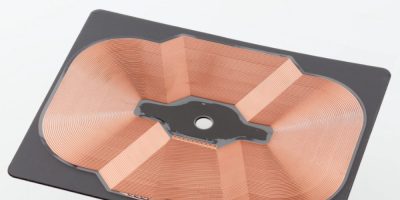NXP Semiconductors has launched two processor families that extend its S32 automotive platform with high-performance real-time processing.
The S32Z processors can be used for safety processing and domain and zonal control, while the S32E processors are for electric vehicle (xEV) control and smart actuation. The software-compatible S32Z and S32E processors help enable software-defined vehicles, reduce software integration complexity and enhance security and safety, said the company.
These processors feature the critical deterministic behaviour of safe MCUs, but combine gigahertz speed, multi-application isolation and memory expansion. They are suitable for the safe integration of cross domain vehicle functions for software-defined vehicles and are scalable, 16nm S32Z and S32E processor families with a roadmap to 5nm solutions.
Domain and zonal architectures enable carmakers to optimise wiring harnesses, reduce cost and weight, and implement a more scalable and cost-effective, software-centric approach for developing and updating intelligent vehicles. This transformation requires processors that offer higher performance, application isolation and memory expansion.
Robert Bosch GmbH was a key partner in the collaborative design process.
“We collaborated closely with NXP on the two new processor families,” said Axel Aue, vice president of engineering at Bosch. “The S32Z and S32E processors offer a performance increase of a factor of two compared to embedded NVM MCUs, key integration platform features and scalable memory with LPDDR4 DRAM and flash. It’s also ideal for embedded integration and allows the consolidation and isolation of vehicle functions with very high performance that previously required multiple MCUs.”
NXP’s S32Z and S32E processors offer eight Arm Cortex-R52 processor cores with split-lock support that operate at up to 1GHz to address safely integrating deterministic, high-performance real-time applications. The processors isolate independent real-time applications with “core-to-pin” hardware virtualisation and resource firewalls for freedom of interference.
The processors come with up to 64Mbyte of integrated flash memory for large, zero-downtime over-the-air (OTA) updates and support LPDDR4 DRAM and flash expansion memory with execute-in-place (XiP) mode for large applications and Autosar adaptive applications. A communications accelerator (FlexLLCE) supporting 24 CAN interfaces, along with a Gigabit Ethernet switch supporting time sensitive networking (TSN), provides vehicle data to “virtual ECUs” to improve efficiency and streamline software development, said the company.
A hardware security engine (HSE) supports secure boot, accelerated security services and key management. The S32Z and S32E processors are certified to ISO/SAE 21434 for cybersecurity and ISO 26262 for Asil D functional safety.
The S32E processors add smart actuation capabilities, specifically in the form of advanced timers and high resolution ADC and 5V analogue and I/Os, for xEV integration applications with direct-drive motor control.
The S32Z and S32E processors enable OEMs and tier ones to develop a wide range of new vehicle architectures with diverse real-time processing needs.
NXP offers system support for S32Z and S32E processors to accelerate customer designs, including the co-developed FS86 Asil D safety system basis chip (SBC) and PF5030 power management IC (PMIC) with enhanced safety features and in-vehicle networking support with Ethernet switches and PHYs and CAN transceivers, along with other analogue companion chips, such as the GD3160 IGBT/SiC high-voltage inverter gate driver and MC3377x battery cell controllers.
Silicon evaluation, software development and rapid prototyping can be accelerated using the GreenVIP vehicle integration platform software with the GreenBox 3 development platform, supported by software and tools, claimed NXP. NXP will present a technical paper on “Key Technologies for Enablement of Multi-Core, Real-Time Domain Controllers” and showcase the S32E processor in action with a “Safe Multi-ECU Integration” demonstration focused on multi-core performance and fault-tolerance at Embedded World (21-23 June) in Nuremberg, Germany, at Hall 4A-222.
http://www.nxp.com







